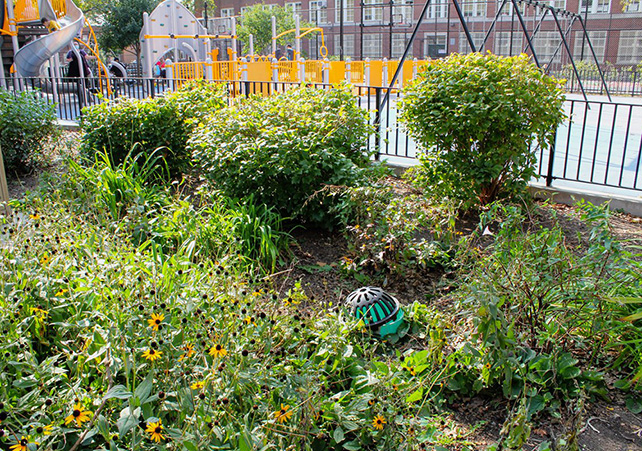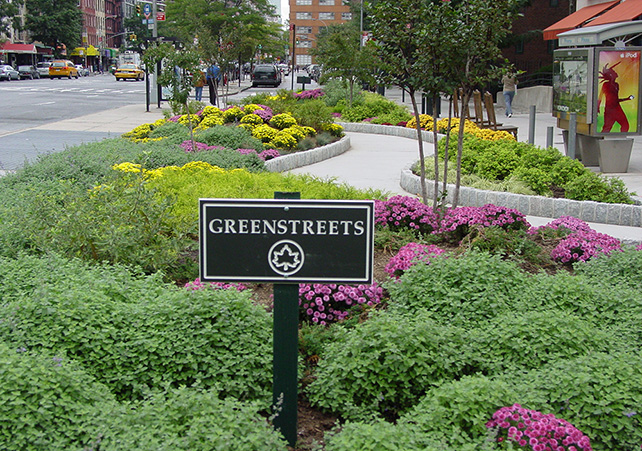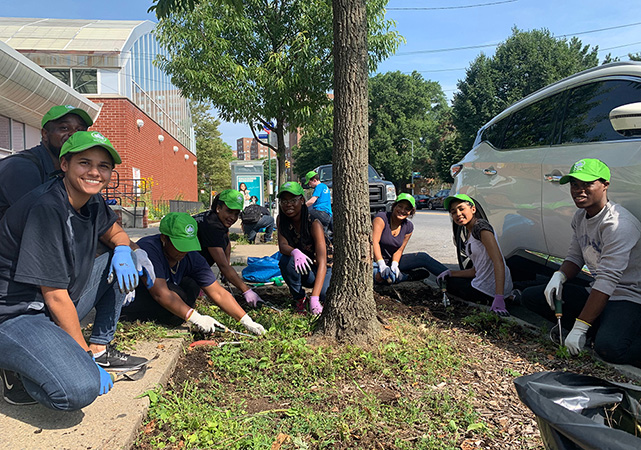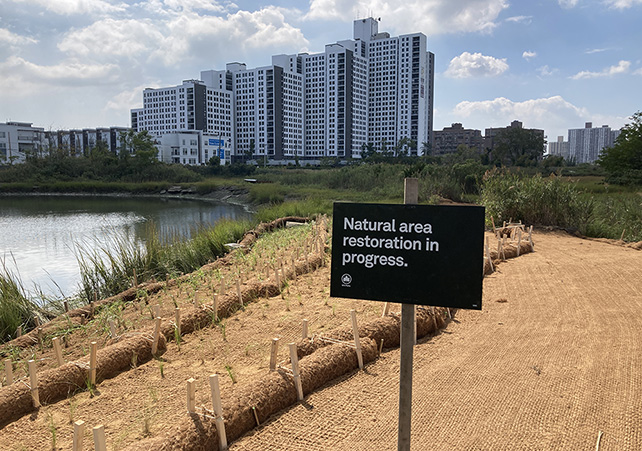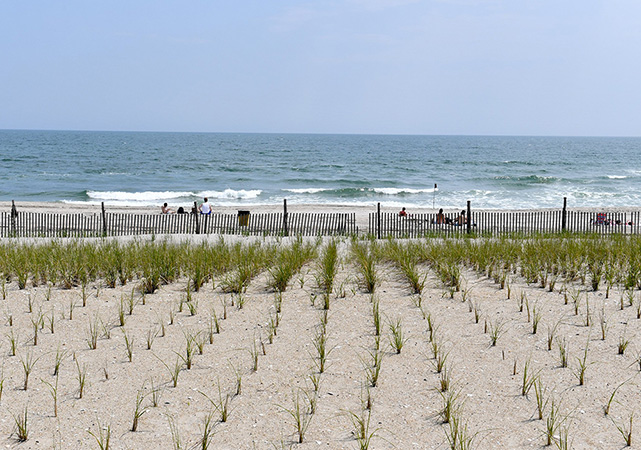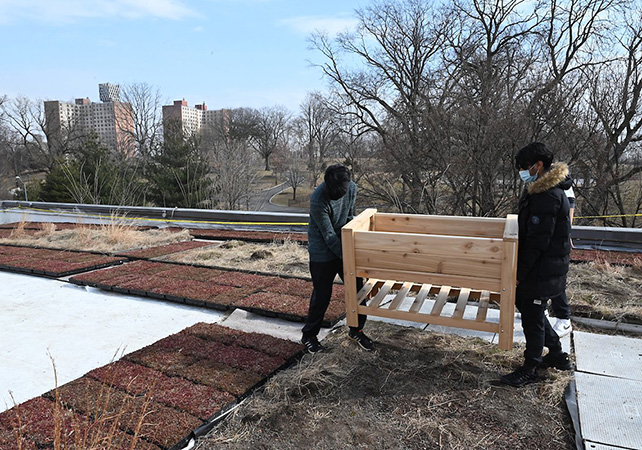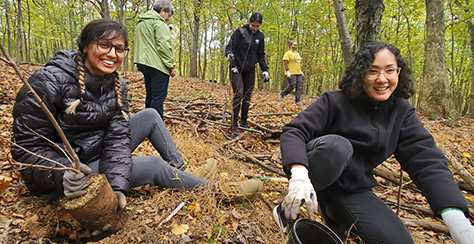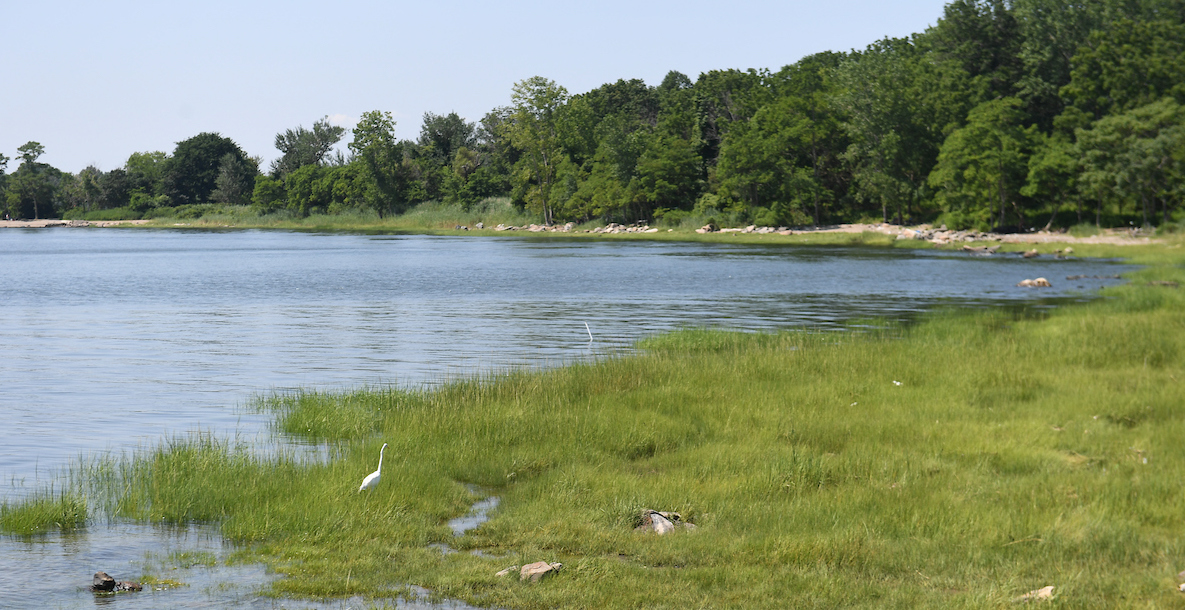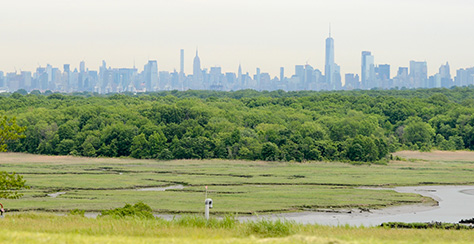How NYC Parks Fights Climate Change: Cleaning Our Water and Protecting Flood-Prone Communities

Cities like New York are filled with hard surfaces such as roads, sidewalks, and buildings that don’t absorb water. When rain falls, the rainwater, therefore, flows across streets and sidewalks instead of soaking into the ground. This runoff can carry trash and other pollutants into local waterways and cause flooding.
Pollution is especially a concern in NYC because the city’s sewer system includes Combined Sewer Overflows (CSOs), in which rainwater runoff and domestic sewage are collected in one pipe. Under normal conditions, this wastewater is transported to a sewage treatment plant, where harmful pathogens, chemicals, and floatables (litter that floats on the surface of the water), can be removed. But when heavy rainfall overwhelms the system, untreated wastewater can be discharged directly into local water bodies, harming wetland wildlife and plants.
The effects of climate change on precipitation patterns in New York are already being observed and are expected to intensify over time; heavy rainfall events will be more frequent, more intense, and go on longer. These types of rain events lead to increased risk of flooding and water pollution. Additionally, coastal flooding will happen more frequently and cover more areas with more water, as a result of sea level rise. Sea levels along New York’s coast have risen more than one foot since 1900 and could rise even more over the next hundred years, putting New York’s coastal communities at even greater risk.
What We’re Doing
With more green spaces and permeable surfaces, there is less runoff, fewer pollutants washing off into waterways, and better water quality.
Growing Rain Gardens and Bioswales
What you might think is just an ordinary garden may instead be a rain garden at work! Rain gardens and bioswales are specifically constructed to slow down the flow of water and allow it to soak into the soil, rather than running off hillsides or into streets. These greenspaces feature a well-draining soil or gravel base and plantings of native shrubs, perennials, and grasses on the slopes of small depressions. The plants intercept rainfall during rain events and their roots soak up water from the soil and help stabilize the slope. These depressions can retain water after a rain event for 24-48 hours.
Some rain gardens are easy to spot – look for these beehive-shaped grates, which are added to protect against overflows.
Creating Greenstreets
Much like rain gardens and bioswales, our Greenstreets also help slow down the flow of water. These spaces are planting beds with trees, shrubs, perennials, and groundcover plants in paved, vacant traffic islands and medians. Thousands of unused road areas have been transformed into greenstreets that not only capture stormwater, but create shade, provide wildlife habitat, and cool the air around them. Visit NYC DEP’s website to learn more about our city’s Green Infrastructure plan.
Greenstreets are grown along sidewalks and in street medians to help capture stormwater.
Caring for Trees
Healthy trees, especially street trees, can reduce the amount of runoff and pollutants entering our waters by intercepting raindrops as they fall to the ground. When raindrops hit the leaves of a tree’s canopy, there is less water hitting the ground in a short period of time, allowing more rain to infiltrate (or soak into) the ground. On average, a single tree absorbs about 1,500 gallons of stormwater every year. Check out our NYC Tree Map to see just how much water each street tree has intercepted.
Volunteer Street Tree Care Captains organize neighbors and friends to care for street trees so that they can care for us.
Adding Permeable Pavement
Hard surfaces such as permeable pavement can also be designed to help prevent stormwater runoff. Unlike traditional pavement materials, permeable pavement has spaces for water to pass through and infiltrate into the ground. We use permeable pavement where possible in playground reconstructions, parking lots, plazas, and tree pits.
At Rapkin-Gayle Plaza in Lower Manhattan, we added permeable paving to help protect the neighborhood from flooding.
Restoring Wetlands
Wetlands in coastal areas also provide flood protection for nearby communities. Salt marshes and other wetland areas reduce the impacts of storm surges and coastal flooding by detaining floodwaters and buffering wave energy. In 2021, together with the Natural Areas Conservancy, we released the Wetlands Management Framework for New York City, a plan that outlines the protection of approximately 2,820 acres of fragile wetlands and streams on parkland through the early 2050s.
Together with the Natural Areas Conservancy and volunteers, we restored Seagirt Avenue Wetlands in 2021 by removing 177 cubic yards of concrete and planting marsh grass.
Planting Beach Grass
We design our waterfront parks with resiliency in mind, using materials and plants that are best suited for coastal conditions. Plants in these areas need to be able to withstand high winds, salt, and drought. (Yes, drought! Even next to the ocean! Many of these soils are very sandy, meaning water passes through them quickly). The Greenbelt Native Plant Center specifically grows species that are adapted to local conditions and is able to provide park designers with a variety of native plants and seeds that will thrive in our local ecosystems. In the Rockaways, for example, many sand dunes feature plantings of native beach grasses that enhance the dunes' stability and help them to better protect the boardwalk and inland areas from incoming waves.
American beachgrass is planted at Rockaway Beach to help stabilize the beach dunes and protect the coastal community at the Rockaways.
Rethinking Green Roof Design
Green roofs reduce the amount of stormwater runoff by 50-90 percent. Depending on the roof design and rain event, a green roof may even be able to retain 100 percent of the water that falls on it. Some roof designs even allow for stormwater to be stored until needed to water the plants! Green roofs also filter out potential stormwater pollutants, including cadmium, copper, lead, nitrogen, and phosphorus. As of 2022, Parks manages more than 250,000 sq. ft. of green roofs, which capture nearly 8 million gallons of stormwater annually.
In 2022, the first class of the Youth Sustainability Corps helped design new rooftop gardens at parks across the five boroughs.
Managing Stormwater Pollution
About 70 percent of NYC parkland is part of the Municipal Separate Stormwater Sewer System (MS4), meaning rainwater that falls on these areas flows directly into local waterways without treatment. Our agency conducts site assessments, identifies potential pollutants, including oils, chemicals, and sediments, and recommends best management practices to keep our local waterways clean.
Explore More Ways NYC Parks Fights Climate Change
In addition to cleaning our water and protecting flood-prone communities, we're also tackling other effects of climate change that impact our air quality, heat index, and wildlife. Learn more:

Cooling Our City
We're expanding greenspaces on neighborhood blocks, in parks, and on rooftops, in addition to adding water features in our parks, to help lower the city's heat index and provide respite during the warmest months.
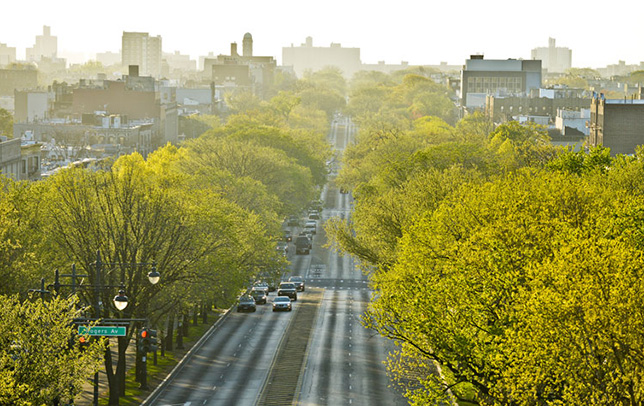
Cleaning Our Air
Our trees and other plantings play a vital role in removing harmful pollutants. Delve into the science behind our plantings that improve air quality and discover how we're shifting to renewable energy to help keep the air clean.
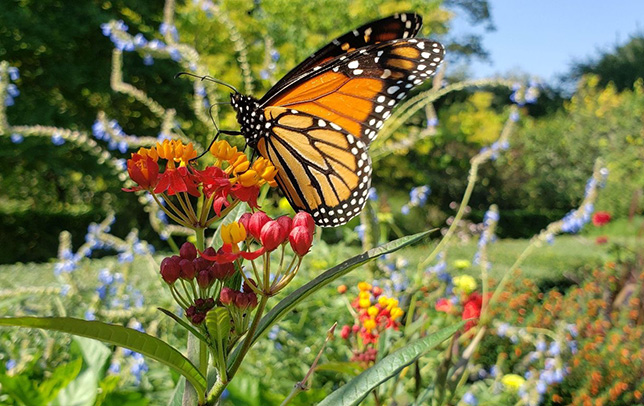
Restoring and Protecting Our Ecosystems and Wildlife Habitat
Both development and climate change have dwindled our natural resources over time, leaving our city vulnerable. Examine how we're restoring these vital greenspaces and reinforcing how they protect us.
Learn more about how we're
restoring and protecting our
ecosystems and wildlife habitat
Features
Steps You Can Take to Fight Climate Change
Learn how you can volunteer with us to restore natural areas and discover how you can join the fight on your own by caring for your street tree, growing pollinator-friendly gardens, and reducing your carbon footprint!
Ecosystems in New York City Parks
Take a closer look at our forests, wetlands, and meadows, how we care for them, and how they benefit the health of the city.
Sustainability at Parks
Explore more ways we’re making our city more resilient and how we’re incorporating climate action into how we care for and build parks.
Last updated: September 22, 2022

